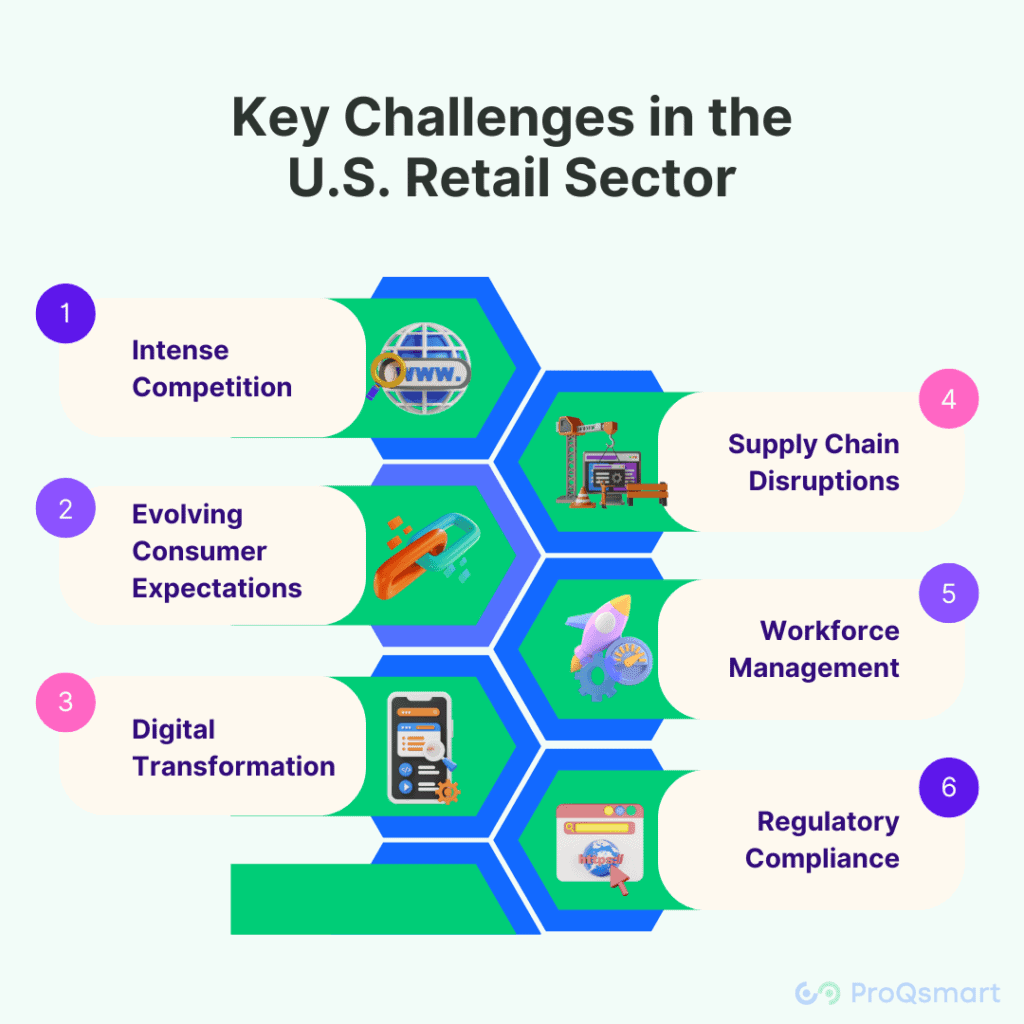The procurement in retail industry in the United States is a dynamic and competitive landscape, constantly evolving with changing consumer behaviors, technological advancements, and economic shifts. Retailers face a multitude of challenges that can impact their growth and sustainability. This blog delves into the critical issues confronting U.S. retailers and offers insights into navigating these challenges effectively.
Key Challenges: Procurement in Retail Industry

Intense Competition
- The retail market is highly competitive, with players ranging from small businesses to multinational giants. Retailers must differentiate themselves through unique value propositions, product offerings, and customer service to stand out.
Evolving Consumer Expectations
- Today’s consumers are more informed and demanding. They expect a seamless shopping experience, personalized service, and fast delivery. Meeting these expectations requires retailers to be agile and customer-centric.
Digital Transformation
- The integration of digital technology into all areas of business is essential. Retailers face the challenge of adopting new technologies to improve operational efficiency and create omnichannel shopping experiences.
Supply Chain Disruptions
- Global supply chain issues can lead to inventory shortages, delayed shipments, and increased costs. Effective supply chain management is crucial for retailers to ensure product availability and maintain customer satisfaction.
Workforce Management
- Recruiting and retaining skilled employees in the procurement in retail industry can be challenging. Retailers need to invest in workforce development and create a positive work environment to attract and retain talent.
Regulatory Compliance
- Navigating the complex web of regulations, including labor laws, health and safety standards, and consumer protection laws, is a significant challenge for retailers, requiring continuous monitoring and compliance.
Strategies for Overcoming Retail Challenges
Leveraging Data Analytics
- Utilize data analytics to gain insights into consumer behavior, market trends, and operational efficiency. This information can guide strategic decisions and enhance competitive advantage.
Enhancing Customer Experience
- Focus on improving the customer journey by offering personalized experiences, exceptional service, and convenient shopping options both online and in-store.
Investing in Technology
- Adopt the latest retail technologies, such as e-commerce platforms, mobile apps, and AI-driven tools, to streamline operations and create engaging shopping experiences.
Optimizing Supply Chain Management
- Develop robust supply chain strategies that include diversifying suppliers, improving inventory management, and leveraging technology for real-time tracking and forecasting.
Fostering Employee Engagement
- Create a supportive work culture, provide training and development opportunities, and offer competitive benefits to motivate and retain employees.
Staying Ahead of Regulatory Changes
- Implement comprehensive compliance programs and stay updated with regulatory developments to avoid legal issues and build trust with customers.
Conclusion
The procurement in retail industry in the U.S. is facing numerous challenges, from intense competition and changing consumer demands to digital transformation and supply chain complexities. By understanding these challenges and implementing strategic solutions, retailers can navigate the turbulent market, enhance their value proposition, and secure a strong position in the competitive landscape. Embracing innovation, focusing on customer experience, and investing in people and technology are key to overcoming the hurdles and achieving long-term success in the retail industry.


